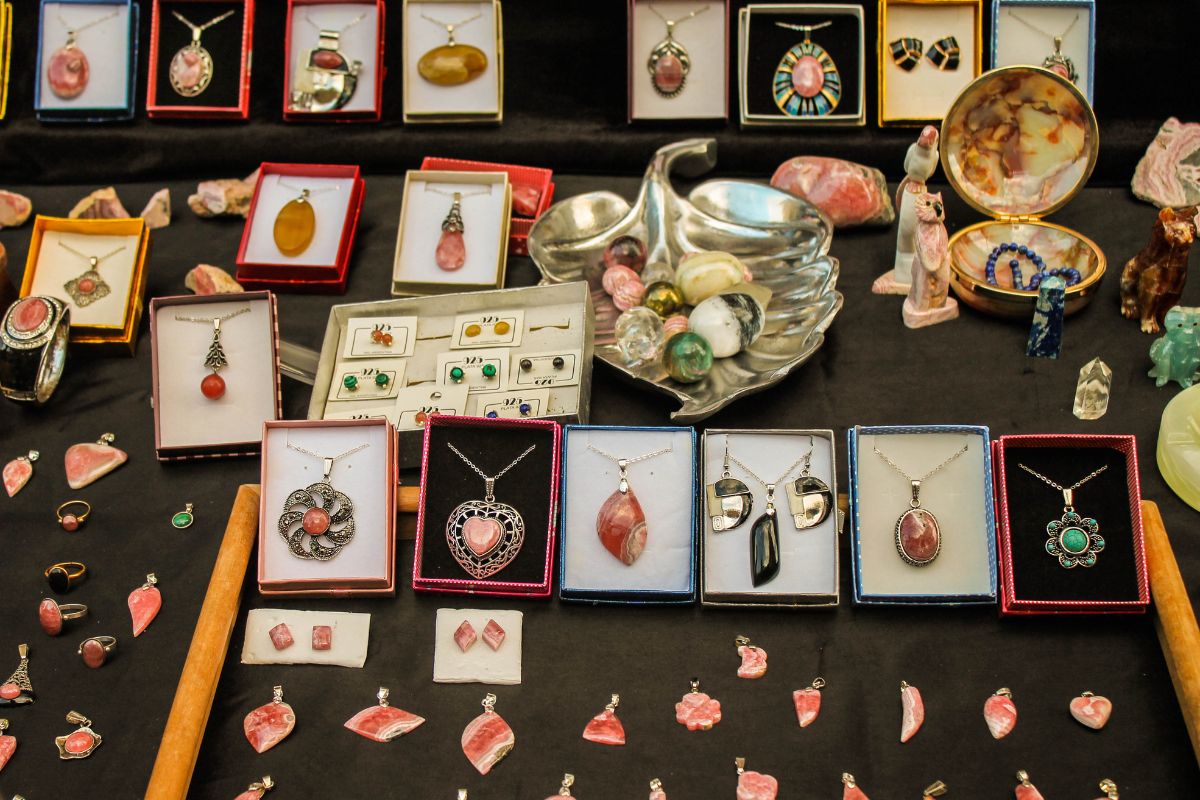Costume jewelry is also known as fashion jewelry and can make for a cost-effective way to add some style and bling to your look. These accessories are usually made from cheaper materials than their real-deal counterparts, such as base metals, acrylic beads, or plastic.
Real (or fine) jewelry, on the other hand, is made from high-quality, rare, or premium materials, such as precious metals and gemstones. It often represents a significant investment, with pieces passed on through generations.
But can you really tell the difference between the real deal and its costume brethren? We investigate below.
Table of Contents
Metal Jewelry
Wondering how to tell whether gold jewelry is really what it seems? Finding out is pretty easy. Most real gold jewelry will feature tiny markings that denote the type of metal it’s made from and its level of purity. You’re looking for a number followed by the letter K or the word “karat.” This will tell you whether the ring, bracelet, etc, is made from. For example, a 10-karat gold necklace may have “.417K” stamped on it.
It’s a similar system for sterling silver jewelry. Here, you’re looking for the markings “sterling” or “925” stamped onto the metal. This indicates that the silver is 92.5% pure. And for platinum jewelry? The piece should be marked with the words “platinum” or “plat.” Some manufacturers also include their own stamp on the jewelry they produce so buyers can be sure of its authenticity.
However, these methods aren’t entirely foolproof. While manufacturers are required to provide information about the metal type and purity of the jewelry they offer, it’s not compulsory for this to appear on the item itself, although this tends to be standard practice.
As we mentioned at the top, real jewelry usually represents a sizeable investment and often holds significant sentimental value for the owner, too. Many people overlook their jewelry when it comes to insurance coverage, but you can add extra coverage to your renters insurance policy to protect your jewelry. This can be a convenient and cost-effective way to protect your precious items.
Ways to Test Your Jewelry
If you’re still not sure whether your metal jewelry is made from precious metals or is costume jewelry, there are some tests that’ll reveal the answer. Firstly, have a go at the magnet test. If your item of jewelry sticks to the magnet, it contains one or more blended metals – meaning it’s not pure gold.
You can also take a close look at the tiny details of the jewelry’s makeup. For example, the clasps on earrings can reveal that an accessory is of the costume rather than the real variety: steel posts are a red flag that you’re looking at the former.
According to many jewelers, however, the failsafe test to check whether or not an item of jewelry is real gold is with the use of nitric acid (with care!). To carry out this test, pop a tiny spot of nitric acid onto a small section of the jewelry. If it turns green, it’s costume.
How About Gemstones?
Transparency can reveal the difference between the real and the costume, too: if the gem doesn’t allow light to pass through it, it could be fake. However, it’s important to be aware that there are some opaque natural gemstones, so this is only one consideration to take into account.
Fake gemstones tend to be less clear, lighter in weight, duller, and not as brilliant as real precious stones. Plus, real gemstones are hard and smooth, whereas costume stones tend to often feel sandy or rough to the touch and may be easily malleable. A look at the clarity and cut of the stone can reveal important differences, too. The real deal usually boasts precise, symmetrical cuts with few or no flaws.
Are you wondering whether a diamond is real or, in fact, made of cubic zirconia? Again, have a look at the cut of the stone, but also pay attention to the colors it reflects. Many fake diamonds have too much color in them – so if the stone is reflecting all the colors of the rainbow, it’s a major sign that it’s not authentic.
And, of course, there’s the common sense test. If a fabulous-looking item of jewelry claims to be the real thing and is impossibly cheap, it’s probably a fake or costume item.
The Takeaway
If you’re keen to ensure that the item you’re buying is authentic or are wondering whether some jewelry you have is real, then you can use the above guide to help find out for sure. However, when it comes to wearing jewelry, it’s unlikely that anyone else will know whether your item is costume jewelry or the real thing, making these accessories a great, affordable way to embellish your accessory collection.
















